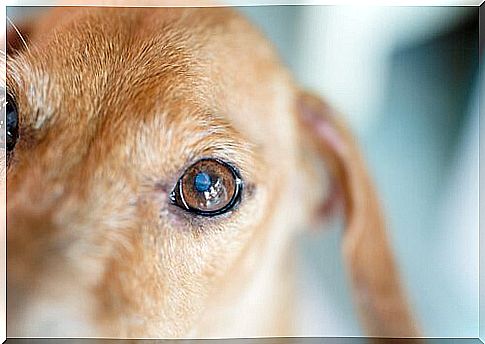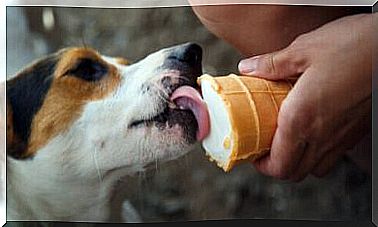Cataract Treatments And Symptoms In Dogs

Over the years, our pets suffer from different diseases that affect their lifestyle. In the case of cataracts, it prevents them from seeing properly and can lead to blindness.
What is cataracts in dogs?
When our animal crosses the threshold of eight or nine years, it is considered to be in the third age, just as it happens to people. And the illnesses he suffers from that moment are similar to those of elderly humans.
Cataracts in dogs are no exception. It is an opacity of the lens of the eye, which has the function of focusing light rays on the retina. When this kind of whitish or bluish ’tissue’ appears, the animal’s vision diminishes.
It is necessary to differentiate cataracts from another problem specific to elderly dogs: crystalline sclerosis. This condition causes the eye to harden and produce a grayish tint. The veterinarian is in charge of detecting which is the case.

Normally, cataract formation in dogs is slow. That is, it doesn’t show up overnight. The exception is if the animal has had a specific problem, such as trauma, untreated inflammation, or diabetes.
Some breeds are more prone to cataracts: Cocker Spaniel, Pekingese, Schnauzer, Golden Retriever, Siberian Husky, Fox Terrier, Labrador and English Shepherd. However, this does not mean that others are exempt from having it.
And even if it’s an inherited disease, early detection could prevent the animal from going blind. With regard to preventing or delaying the onset of cataracts, it is advisable to pay attention to eye hygiene, have a healthy diet, and have annual check-ups with the veterinarian.
What are the symptoms of cataracts in dogs?
The signs of cataracts in dogs are very characteristic and visible. At first, the animal may have excessive tearing and eye discharge, which in many cases is mistaken for an infection or poor hygiene.
But then, over time, the lens becomes opaque and is covered with a white or blue circle. Added to this is light intolerance: the dog will always prefer the shaded areas of the house and when he goes outside during the day, he will nod his head or appear to be blind.

It is very important to detect cataracts early as they cause a decrease in the animal’s vision. While it’s true that dogs’ primary sense is smell, the truth is they also need their eyes for everyday life.
Can cataracts in dogs be treated?
The only way to eliminate cataracts in dogs is through surgery that removes the lens. This surgical intervention includes replacement with an intraocular lens that prevents the pathology from developing again.
The percentage of effectiveness of this surgery, with ultrasound, is around 95%. You should keep in mind that although the operation will return the animal to some degree of vision, it will no longer be able to have 100% of its vision, as when it was a puppy or young (or even before suffering from cataracts).
Postoperative care is essential. He will need to wear an Elizabethan necklace for at least two weeks, during which he will not be able to exert himself or exercise, will not be able to shower, and this will require you to clean the area where he is staying several times a day. After the first week, the dog will regain vision and sensitivity to light, especially sunlight, will be reduced.









